Terre di Frontiera involves a collaborative investigation to tell the story of the Ghetto la Felandina (Bernalda) and the exploitation of migrants labour in Basilicata from the point of view of migrant workers and activists.
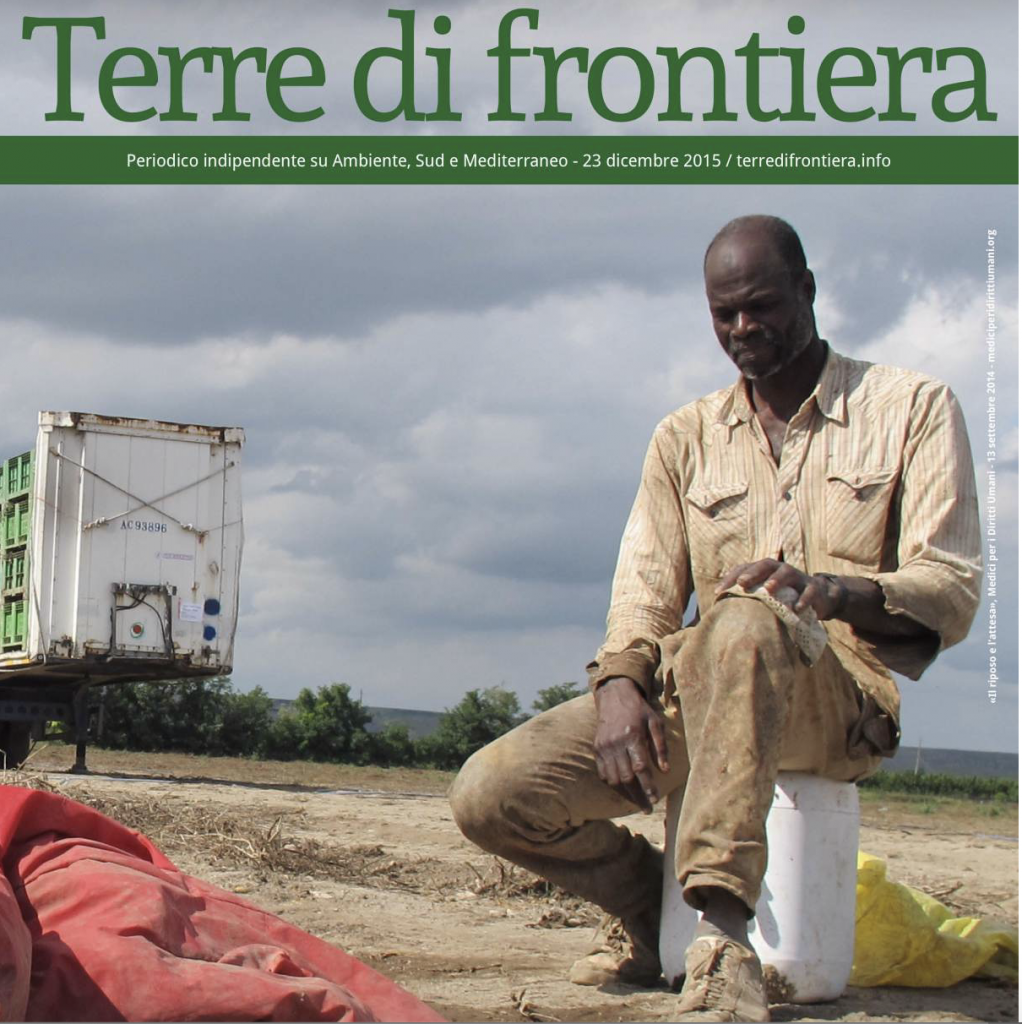

Terre di Frontiera involves a collaborative investigation to tell the story of the Ghetto la Felandina (Bernalda) and the exploitation of migrants labour in Basilicata from the point of view of migrant workers and activists.

Two days ago, the mayor of Bernalda, Domenico Tataranno, officially announced the imminent eviction of the migrant ocupation La Felandina, located in the industrial zone of Metaponto. The building has been occupied since a year by approximately 600 migrant workers, a majority of which are in possession of regular residence papers, according to official police sources. The migrants offer their labour to agricultural enterprises in the area. Since a few years the Basilicata and Calabria coastline has effectively become Southern Italy’s grocery garden: from the famous strawberries harvested in early Spring to the fruit and vegetables that are cultivated here over the Summer and Autumn, production continues throughout the year. Farmers sell their produce under often unfavourable contracts to the big distribution networks through intermediaries located in Puglia and Campania.
Speaking at a public meeting, the mayor said he took his decision after a long series of meetings with the Prefecture, Town Hall, and competent authorities – notwithstanding the acknowledgement, by the territiorial prefecture, that migrant workers who come to the area have difficulty finding alternative forms of accommodation. “It will be up to the State, through the security forces, to implement the eviction in practice. We will try, with the collaboration of those poor people, to find the best solution from a logistic point of view,” Tataranno concluded.
In March this year, the head of Basilicata’s Migrant Policy Coordination, Pietro Simonetti officially promised a temporary reception facility for 150 seasonal migrant workers, which so far has not been concretely defined. In the meantime, therefore, migrant workers have no other alternative other than occupying a new site.
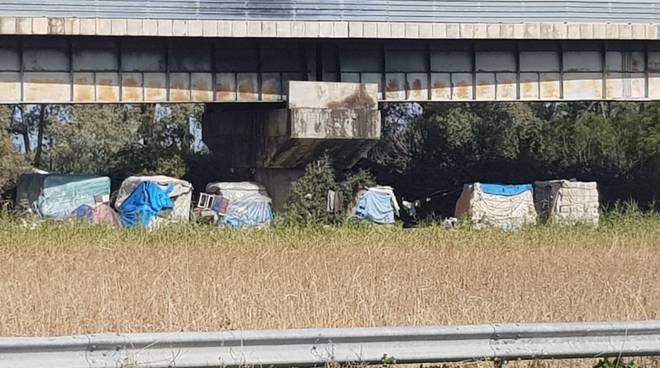
It is not the first time it comes to such tensions in the area of Metaponto. Already in 2018, the mayor of Bernalda ordered the clearance of various tent camps located under the town’s bridges and in the many abandoned warehouses in the area. Like much of Basilicata, the area continues to be affected by a progressive abandonment, driven by a lack of institutional capacities and employment opportunities. Specifically, the 2018 eviction followed an open letter in which Metaponto’s residents denounced the, in their view, “disproportionate” presence of immigrant citizens who come to the area to work. Declaring a state of emergency, they asked the mayor to restore law and order in the area.
The same year, two agricultural entrepreneurs and one gangmaster based in Metaponto had been officially indighted for illicit labour recruitment, which has become an offence under the new anti-racket legislation. Altogether, these events reveal once more the paradox of the current legislative context, which regards migrant labour intermediation as a criminal offense, but at the same time refuses to address its root causes beyond a mere logistical perspective.
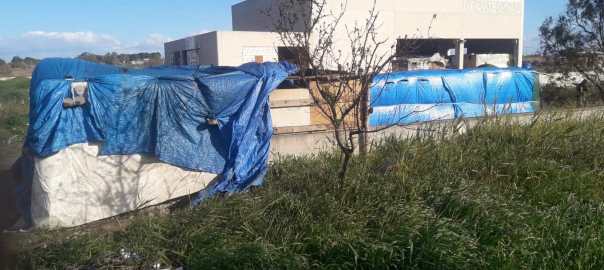
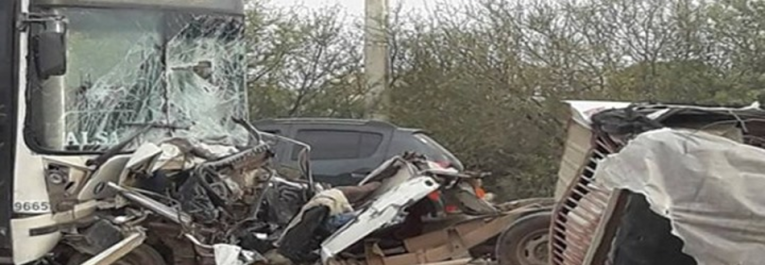
Reading my regular reports on Italian tomato plantations, a colleague who attended a seminar on migration & agriculture in Agadir recently (pdf here) alerted me to an accident involving several ‘moukef‘, or informal workers, in Morocco. The accident caused the death of 14 women and 30 serious injuries in the plain of Kenitra, in the north of the country, which is famous for its strawberry production.
The ‘moukef‘ involves a form of informal employment for thousands of – predominantly female – workers who find temporary jobs in agriculture: not just in Kenitra but also the hothouses of Morocco’s Chtouka Aït Baha province. The province is covered with hundreds of burning plastic tunnels, where a modern form of slavery unfolds at the service of the country’s increasingly booming industrial export agriculture.
The ritual of labour recruitment appears to be similar to other plantation economies in Europe and the Americas: every day a handful of women who gather on an open labour market are selected by a ‘cabrane’, an informal recruiting agent whose mission is to bring them to the agricultural estates. The journey on board of the pickup trucks is full of danger for these women, who regularly become victim of road accidents.
The accident of 3 April is not an isolated case. Numerous times both local news outlets and agricultural workers associations have denounced the conditions of these workers.
Only last Summer, a similar accident involving 4 African day workers had caused a national outcry in Italy while their van crashed into a truck close to the city of Foggia, leaving the load of tomatoes spread out on the road pavement.
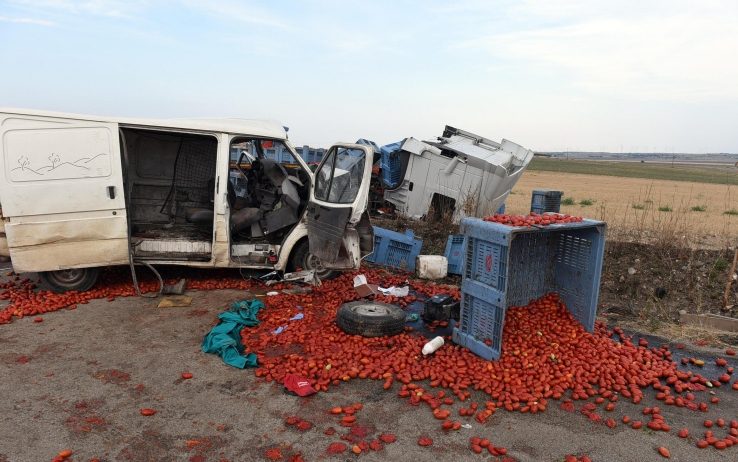
Another tragedy has affected African labourers in Italy’s plains this month. On 6 March, bulldozers demolished the San Ferdinando workers’ ghetto, located in the centre of Calabria’s orange plantations and Calabria’s Ndrangheta organized crime stronghold. The ghetto, which has claimed the lives of three people over the last year, had become a thorn in the eye of Italy’s Interior Minister, Matteo Salvini, who has ordered the erection of a tent camp as well as a restoration of public order in the area.
In 2011 the research team Bitter Oranges recorded living conditions in San Ferdinando in this video.

The eviction of San Ferdinando (close to Rosarno, which has been termed one of Italy’s new slavery sites) forms part of Italy’s interior minister’s promise to move “from words to actions.” Matteo Salvini is also the head of the right populist League party, whose members are currently establishing an institutional alliance with the European Far Right. Since his election he has repeatedly declared his intention to “raze to the ground” Italy’s shantytowns, including Rom and refugee settlements. Over the last year, more than a dozen such camps have been demolished, including the Baobab Experience in Rome, which hosted over hundreds of refugees and asylum seekers, as well as various Sinti and Rom settlements around Turin, Pisa and the Italian capital.
The official motivation for the eviction has been one of insecurity and a lack human dignity. But the Caritas settlement does not appears to offer much of an alternative. On 22 March, another person died in its tent camp situated only a few meters away from the old ghetto. The victim’s name is Sylla Nouma, a man in his thirties. “We hoped not to deplore situations like this any more,” the mayor Andrea Tripodi declared to the press. “It was an unexpected tragedy,” Vincenzo Alampi, the local Caritas director added. Although the causes of the fire are still be ascertained, a possible reason might have been a short circuit departing form the electric wires located in the corner of the tent.
The government-directed evictions, which Matteo Salvini systematically calls “appointments with legality”, particularly appear to target precarious workers’ settlements located in the heart of Southern Italy’s vegetable and fruit plantations nowadays. After the forced eviction of Rignano Garganico and Boreano last year (both situated in the tomato districts of Foggia and the Alto Bradano), the bulldozers have started moving to the South now. Last May local authorities destroyed the informal labour settlement of Campobello di Mazara, in Sicily –leaving workers no choice but to occupy new buildings: while 128 inhabitants were haphazardly hosted in a camp managed by the Red Cross, others have started to erect smaller settlements in the periphery of neighbouring Castelveltrano, in the heart of Sicily’s olive plantations. A similar fate now awaits San Ferdinando’s settlers. At the time of the eviction, the local prefect estimated the number of slum residents at 1.592 people, according to the Repubblica newspaper. While 200 were immediately transferred to official migrant reception centres, around 900 found temporary accommodation a new tent camp managed by Caritas. Local authorities have announced 30 housing units to accommodate future migrants coming to the area. But the mayor has repeatedly warned against housing migrants without also providing for local residents in this area stricken by poverty and criminality. In the meantime, the Interior Ministry has promised 350.000 euro’s to “restore liveability” in the area of San Ferdinando.
The official motivation for the eviction has been one of insecurity and a lack human dignity. But the Caritas settlement does not appears to offer much of an alternative. On 22 March, another person died in its tent camp situated only a few meters away from the old ghetto. The victim’s name is Sylla Nouma, a man in his thirties. “We hoped not to deplore situations like this any more,” the mayor Andrea Tripodi declared to the press. “It was an unexpected tragedy,” Vincenzo Alampi, the local Caritas director added. Although the causes of the fire are still be ascertained, a possible reason might have been a short circuit departing form the electric wires located in the corner of the tent.
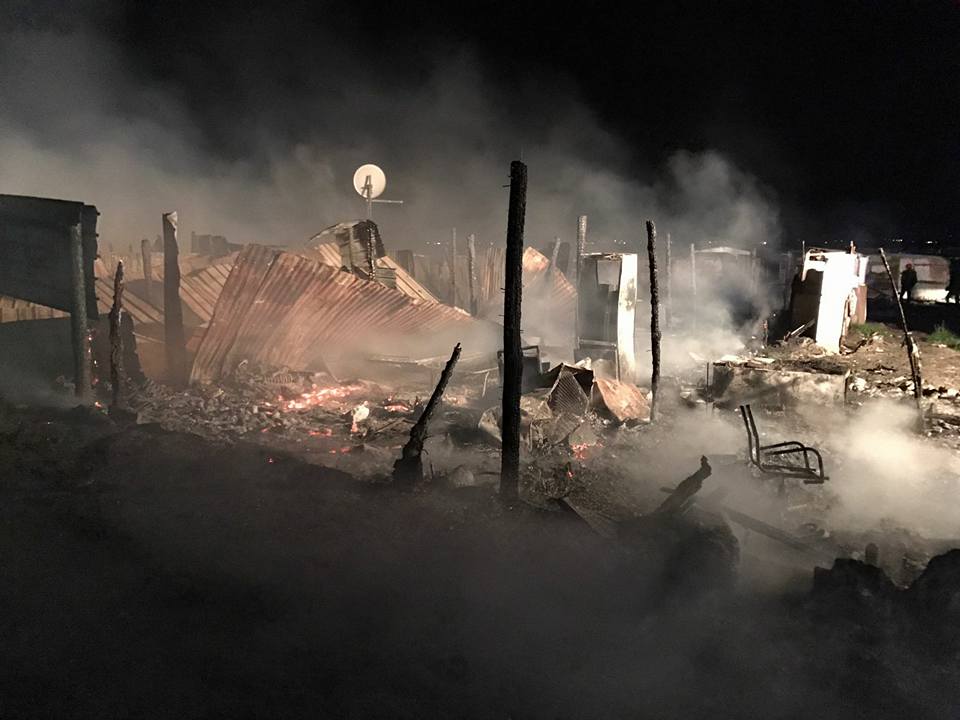
Because of pervasive uncertainty and a lack of consideration by official policies, more and more migrants now have started to move to other vegetable and fruit plantations in the area. Last month, some West African migrants already found refuge in a previous industrial plant in the plains of Metaponto, in neighbouring Basilicata, where the strawberry harvest is currently happening at full speed. Local associations are currently assisting the squatters with social and health services in the absence of official lodging facilities. Most likely, the slum will experience the same fate in a couple of months, when strawberries will have been picked, and the tomato planting season will begin once again in Foggia and Basilicata.
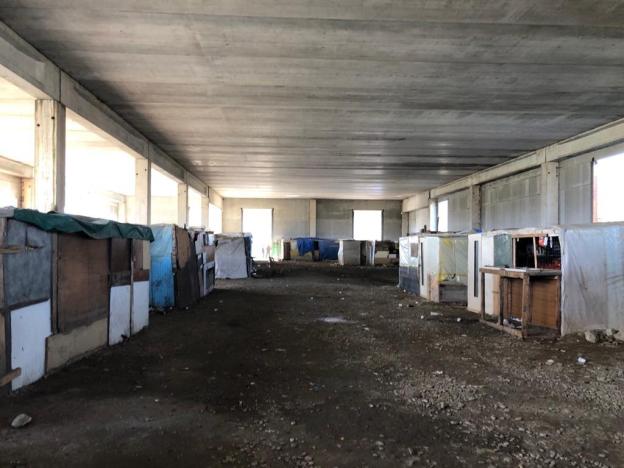
A violent clash between inmates and police left several injured in the migration detention of Palazzo San Gervasio, Italy. Palazzo, a small town of 5000 inhabitants in the region of Basilicata, has recently come to host a group of Tunisian asylum seekers from Lampedusa, which has been officially closed down for renovation (another group was dispatched to Turin). Officially, the Tunisians are being charged now for setting on fire parts of the Lampedusa camp in protest against their inhumane treatment -a charge that has been firmly denied and contested by a court in Turin.
After their arrival in Basilicata mid-March, some Tunisian asylum claimants had started a hunger strike, in a desperate attempt to claim their right to asylum and to see their lawyers. on 27 March, a sit-in in front of the gates by a dozen of activists from the CSOA Anzacresa collective incited the inmates to protest against their infinite detention, which caused the police offensive (according to this report by Cronache di Ordinario Razzismo). Video fragments (which are very difficult to obtain because of the deliberate destruction of personal belongings by the camp guards) shared by the family members of the detainees show several injured inmates carried away by the police.
After a long closure, the migrant detention centre (officially Centri di Permanenza per i Rimpatri: CPR) of Palazzo was officially reopened in January to take on inmates from the overpopulated hotspot of Lampedusa, which had been criticized for some time for its inhumane conditions (for Italian reports see here and here). The structure has a long history of migrant accommodation. Originally confiscated from organized crime in 1999 (from a man called Antonio Sciarra), it initially served as a temporary accommodation for seasonal foreign labourers who return to the region each year to harvest tomatoes (an issue we talked about repeatedly on this blog). In 2011 regional authorities abruptly closed the infrastructure, officially to prevent migrants to settle illegally within the camp structure. While this decision deliberately dispersed foreign labourers to the surrounding countryside to set up their makeshift migrant ‘ghettos’, the regional administration quickly transformed the former labour camp into an open prison (officially CIE: Centro per Identificazione e Espulsione) for about 60 migrant detainees dispatched from various landing sites in Sicily. In April 2011, journalist Raffaella Cosentino documented the extreme cruelty with which migrant prisoners were detained there at the time (amongst others in this video), causing a subsequent protest and official visit by three Italian parliamentarians (Touadì, Calipari and Giulietti), who confirmed this situation as unacceptable.
After a long closure, the management of the infrastructure has been assigned now to a private company, called Engel Italia srl. Engel is not new to migration detention in Italy. In 2014 two civil society organizations, the labour union CGIL and LasciateCIEntrare, officially denounced the company for serious irregularities in the management of a refugee reception centre in Paestum, where migrants claimed they were threatened at gunpoint after claiming their basic human right to medical and assistance and to legal support. Local associations from Basilicata, presided by the Osservatorio Migranti Basilicata, and flanked by LasciateCIEntrare and the legal assistance collective ASGI, already last December attempted to sensitize the public opinion to the imminent reopening of the centre with a joint appeal. Lawyers, who have been denied access to the centre now for “security reasons”, are trying to find other ways to reach the 40 people held in this open-air prison. The only news that crosses its walls now arrives through local associations and through the relatives of the detainees.
In the meantime, the first impressions of our Brussels workshop have been posted online by our funders… Thank you all for a very rewarding experience.
With less than one month to go, I gladly announce here the closing event of the New Plantations project, in Brussels on 14 December. For the last two years our international research team from Switzerland, Belgium and Italy has analyzed migrant work conditions in Europe, focusing on dynamics of illegalization, racialization and labour exploitation in the contintent’s agricultural sector.
Directed by a group of activists, artists and academics, the event will highlight the forces at play in the European horticultural industry. Rather than a classic presentation-based conference, the workshop will be pinpointed around several interactive tables, each of which will address a specific theme. The event will be closed by a short theatre show by Cantieri Meticci, whose members have been active participants in this project.
Anyone who is interested in participating, please send a confirmation email to project director Timothy Raeymaekers (timothy.raeymaekers@geo.uzh.ch) by November 30th. More information on time, place and logistics of the event can be found on our facebook page and on the attached flyer. The language of the event will be French.
https://snis.ch/project/new-plantations-migrant-mobility-illegality-racialisation/
The new issue of Movements: Journal for Critical Migration and Border Studies appeared, addressing current migration and social rights Europe’s border and asylum policies
Invitation to the the first episode of a series of sessions on the Black Mediterranean – a topic amply discussed on these pages.
location: the MET – Bologna,
time: March 25, at 16.30-23.00,
During the meeting we will discuss the working conditions of Black African labourers in South Italy’s tomato fields (particularly Puglia and Basilicata). The workshop will revolve around several tables, each of which will produce a different map of this agricultural frontier.
Little over two weeks after the eviction of the Ghetto of Rignano the situation in the province of Foggia continues to worsen. Still hundreds of people continue to live in the vicinity of the ghetto, huddled in caravans, cars and abandoned houses. While Minister Marco Minniti continues to associate these informal settlements with “illegal migration” (an observation that has repeatedly been proven false: in fact agricultural workers are for the most part regular immigrants), the police and judiciary of Foggia province firm their grip around the urban areas as well. Yesterday, local sources say, around 30 people have been identified and prosecuted for illegal occupation at a site in the periphery of Foggia, located in a former milk factory. The site has been evoked more than once as an example of resistance against the caporalato system, because workers located at la Casa Bianca -as they have renominated the former factory- refuse to work with illegal intermediaries. And, together with Pro Fuga -a local association from which they have drawn some support- they have denounced numerous times the detrimental effects of forced evictions on migrant labourers. The Foggia prosecution signals a clear change of course in addressing the phenomenon of migrant labour in Southern Italy: from 20 years of neglect, institutions appear to move towards a gradual dismantling of all remaining labour settlements -including those situated in urban areas.